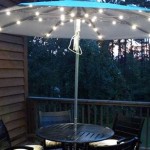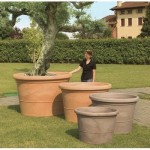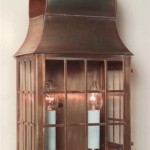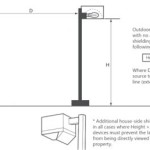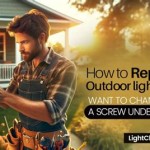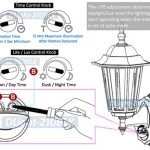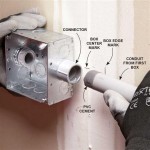Are Outdoor Plugs Waterproof? Understanding Weatherproof Electrical Connections
The functionality of outdoor electrical devices, from string lights illuminating a patio to power tools used for landscaping, often relies on the availability of safe and reliable power outlets. However, the outdoor environment presents a significant challenge to electrical components, primarily the exposure to moisture. This raises a critical question: are outdoor plugs waterproof? The answer, while seemingly straightforward, is nuanced and depends on a variety of factors. Understanding these factors is crucial for ensuring the safe and efficient operation of outdoor electrical equipment and preventing potential electrical hazards.
The concept of "waterproof" in the context of electrical equipment is often misinterpreted. True waterproofing implies complete submersion without any water ingress. In reality, most outdoor electrical devices, including plugs and outlets, are designed to be "weatherproof" or "water-resistant," meaning they can withstand exposure to rain, snow, and other environmental elements to a certain degree. They are not designed for constant submersion or high-pressure water exposure. The degree of protection offered by an outdoor plug or outlet is typically indicated by its Ingress Protection (IP) rating, which is a standardized system used to classify the level of protection provided against solid objects (dust) and liquids (water).
Understanding IP Ratings for Outdoor Electrical Components
The IP rating is a two-digit code; the first digit indicates protection against solid objects, and the second digit indicates protection against liquids. For outdoor electrical components, the second digit is particularly relevant. A higher number indicates a greater degree of protection against water ingress. Common IP ratings found on outdoor electrical devices include IP44, IP54, IP65, and IP66. Each rating offers a different level of defense against moisture. For instance, an IP44 rating means the device is protected against splashing water from any direction, while an IP66 rating signifies protection against powerful water jets.
An IP44 rating is often considered the minimum acceptable rating for outdoor electrical outlets and plugs that are exposed to direct rainfall. Devices with this rating are suitable for use in areas like covered patios or decks where the exposure to water is limited. However, in areas with heavy rainfall or potential for water accumulation, a higher IP rating is recommended. An IP54 rating offers protection against splashing water and dust ingress, providing a more robust defense against the elements. IP65 and IP66 rated devices are suitable for more demanding environments where exposure to water jets or heavy rainfall is likely.
It is important to note that an IP rating only applies when the device is properly installed and the protective covers or seals are intact and undamaged. Regular inspection and maintenance are necessary to ensure the continued effectiveness of the weatherproof seal. Cracked or damaged enclosures, loose screws, or deteriorated gaskets can compromise the IP rating and allow water to enter the electrical components, leading to potential hazards such as short circuits, electrocution, and fire.
Key Features of Weatherproof Outdoor Plugs and Outlets
Several design features contribute to the weatherproof capabilities of outdoor plugs and outlets. These features are specifically engineered to prevent water ingress and ensure the safe operation of electrical devices in outdoor environments. Understanding these features can help consumers make informed decisions when selecting outdoor electrical components.
One of the most important features is the weatherproof enclosure. Outdoor outlets and plugs are typically housed in durable plastic or metal enclosures that are designed to resist the elements. These enclosures are often made from UV-resistant materials to prevent degradation from prolonged exposure to sunlight. The enclosure also incorporates gaskets and seals around the openings to create a watertight barrier.
Another critical feature is the weatherproof cover. Outdoor outlets are typically equipped with hinged covers that snap securely into place when the outlet is not in use. These covers are designed to prevent rain, snow, and debris from entering the outlet receptacle. The cover should be made of a durable, weather-resistant material and should fit snugly against the outlet housing to create a tight seal. It is crucial to ensure the cover is closed and properly latched whenever the outlet is not in use.
Furthermore, weatherproof plugs are designed with integrated seals that prevent water from entering the connection between the plug and the outlet. These seals typically consist of rubber or silicone gaskets that fit snugly around the plug prongs, creating a watertight barrier. The plug housing is also often made from a durable, water-resistant material. Using the correct type of weatherproof plug, designed to fit tightly and seal properly with the specific outdoor outlet, is essential for maintaining the overall weatherproof integrity of the electrical connection.
Wiring also plays a crucial role in weatherproofness. Outdoor wiring should be specifically rated for outdoor use and should be properly installed in weatherproof conduit to protect it from the elements. Connections between wires should be sealed with weatherproof connectors to prevent water ingress. Using the appropriate wiring and connection methods is essential for ensuring the long-term reliability and safety of outdoor electrical installations.
Factors Affecting the Weatherproof Performance of Outdoor Plugs
While outdoor plugs and outlets are designed to withstand exposure to the elements, several factors can affect their weatherproof performance. Understanding these factors is essential for ensuring the long-term safety and reliability of outdoor electrical installations. Proper installation, maintenance, and usage are all critical for maintaining the weatherproof integrity of outdoor plugs and outlets.
The quality of the product itself is a significant factor. Choosing high-quality, reputable brands that are specifically designed for outdoor use is essential. Lower-quality products may use inferior materials or construction techniques, which can compromise their weatherproof performance. It is important to look for products that have been tested and certified by recognized testing organizations such as UL or ETL. These certifications indicate that the product has met certain safety and performance standards.
Installation is another critical factor. Improper installation can compromise the weatherproof integrity of outdoor plugs and outlets, even if the product itself is high quality. It is essential to follow the manufacturer's instructions carefully when installing outdoor electrical components. Ensure that all connections are properly sealed and that the enclosure is securely mounted. Consider hiring a qualified electrician to perform the installation if you are not comfortable working with electrical wiring.
Maintenance is also essential for maintaining the weatherproof performance of outdoor plugs and outlets. Regularly inspect the devices for signs of damage, such as cracks, loose screws, or deteriorated gaskets. Replace any damaged components promptly. Clean the devices regularly to remove dirt, debris, and other contaminants that can compromise the weatherproof seal. Make sure to turn off the power before performing any maintenance on electrical devices.
Furthermore, usage patterns can affect the lifespan and weatherproof performance of outdoor plugs. Avoid overloading the outlets with too many devices, as this can generate excessive heat and potentially damage the wiring and components. When not in use, ensure that the weatherproof covers are closed and properly latched to prevent water and debris from entering the outlet. Avoid using extension cords in wet or damp conditions. If an extension cord is necessary, use a heavy-duty outdoor-rated extension cord that is specifically designed for wet locations.
Ultimately, understanding the distinctions between waterproof and weatherproof, correctly interpreting IP ratings, and adhering to proper installation, maintenance, and usage guidelines are fundamental to ensuring the safety and reliability of outdoor electrical systems. Prioritizing these considerations minimizes the risk of electrical hazards and extends the lifespan of outdoor electrical equipment.

How To Protect Outdoor S From Rain Staley Electric

How To Protect Outdoor S For Safety Mr Electric

Yichuhaoxi Waterproof Weatherproof Electrical Outdoor Power Plug Socket Lockable With Clear Cover 2 15227fph005

Lyamzn 6 Outdoor Surge Protector Power Strip With Ground Stake 25 Ft Extension Cord And Waterproof Black

Protect Your Outside Plugs From Water Damage

Yichuhaoxi Waterproof Weatherproof Electrical Outdoor Power Plug Socket Lockable With Clear Cover

15a Weatherproof Outdoor Power By Journeyman Pro 15 Amp 125 Volt Nema 5 15r Receptacle Kit With Integrated 20 Extension Cord Waterproof

Outdoor Box Deciding On The Right One Rg Electric

Outdoor Weatherproof In Use Recessed Wall Enclosure Gray

How To Waterproof Extension Cords
Related Posts
